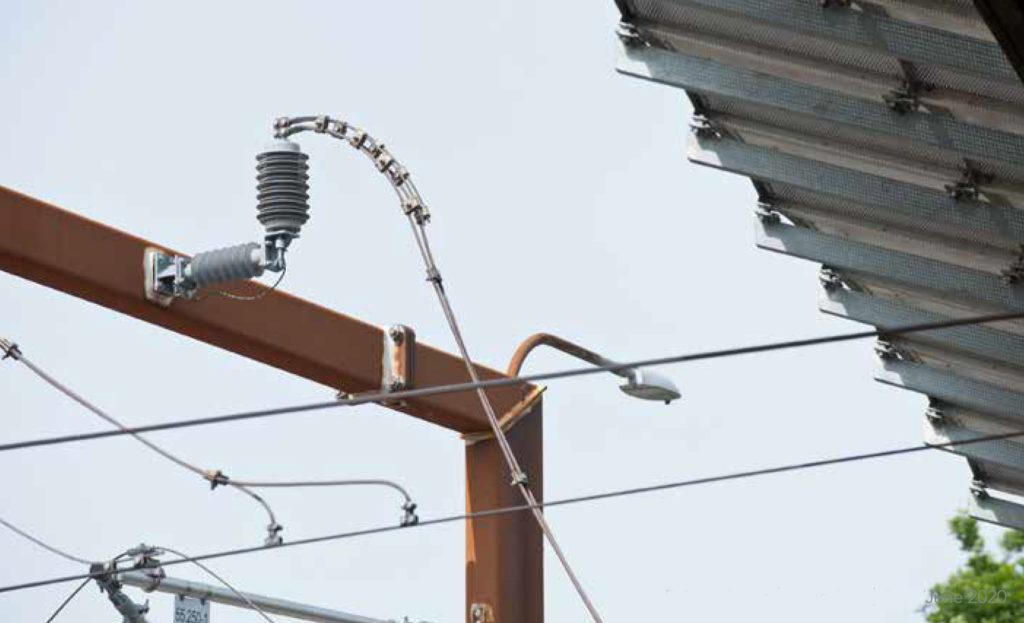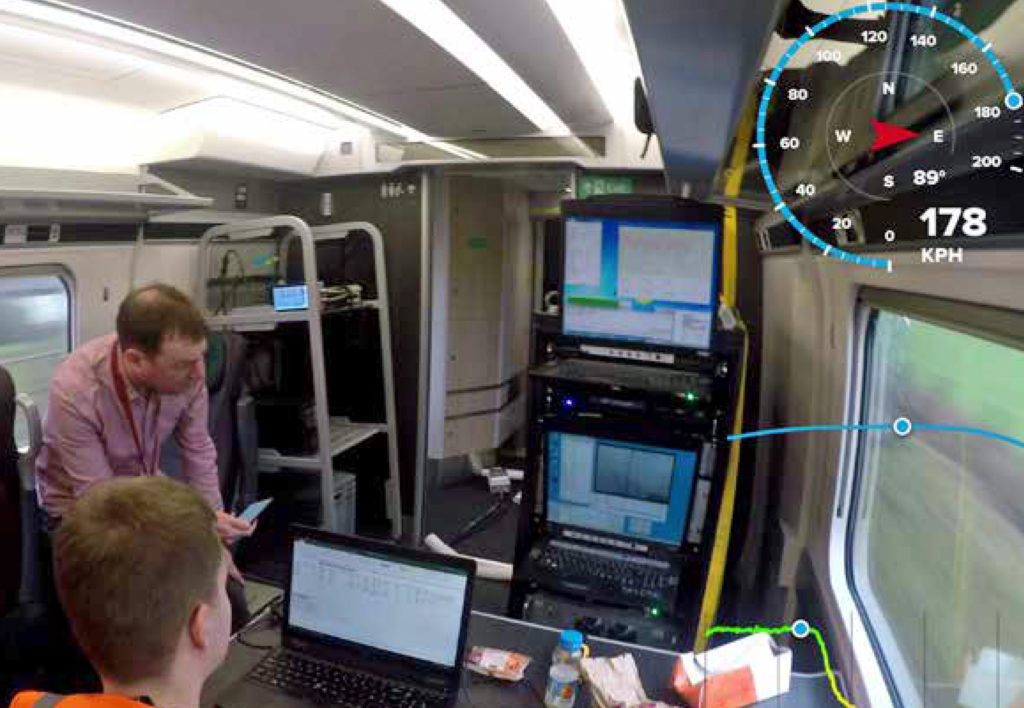Electric trains take power as it is generated and feed it directly into their traction motors without the need to convert energy or store it. Therefore, they will always be more efficient, more powerful, and cheaper to run and buy than self-powered traction. No amount of innovation can change this.
For this reason, except for the USA, railways throughout the world have electrified their core routes. Britain is another exception. On busy routes it has probably the world’s most intensive diesel passenger service and diesel provides 96% of the energy for its freight trains. For this reason, compared with other railways, the UK has a poor carbon record. Pre-Covid, UK rail’s CO2 emissions were amongst world’s worst with, respectively, 2.5 and 2 times the world average rail passenger and freight emissions.
For these reasons Network Rail’s Traction Network Decarbonisation Study (TDNS) recognised that electrification of at least 13,000 single track kilometres (stk) is needed to deliver a zero-carbon railway.
Yet despite the benefits of electrification, the Westminster Government is unwilling to invest in the electrification rolling programme recommended by TDNS. This is because it is not confident that electrification can be delivered at an affordable price. This is understandable given the cost overruns of the Great Western electrification programme which, despite a reduced scope, was delivered at three times the cost of the original estimate.
Thus, if there is to be a net-zero carbon railway the cost of electrification has to be reduced.
NEEP
Speaking at a PWI conference in October, Network Rail’s Andrew Haines stressed that “we must not underestimate the harm done by the horrendous costs and schedule over-runs on the GW electrification. The ball is firmly back in our court to show that we can deliver cost-effectively, and that we can be trusted.” He also noted that “we must remember that we are publicly financed and must account for our expenditure. International benchmarks are there and used to measure our success, so we must push further.”

At the same conference, Prof Andrew McNaughton, previously Network Rail’s Chief Engineer and HS2’s Technical Director, advised that UK electrification was probably double what it costs elsewhere. He felt the job of engineers was to avoid unnecessary work and do unavoidable work efficiently using standardised elements and a factory approach. As an example of the former he mentioned the unnecessary proposal to demolish Steventon bridge as described in our feature on the PWI electrification seminar.
Against this background, the National Electrification Efficiency Panel (NEEP) was jointly convened last year between DfT and Network Rail. The ORR is also represented to identify issues that need regulator backing. NEEP is jointly chaired between Professor McNaughton and senior electrification engineer, Peter Dearman. Initially it informed the pricing of Midland Main Line electrification for its business case submission.
The first phase of the NEEP study considered technical opportunities and innovations to reduce the cost of electrification. It identified nine such action items:
- Bridge parapets – secure widespread adoption of deriving parapet heights from risk assessment rather than a blanket application of 1.8 metres.
- Voltage controlled clearances – roll out standards for the use of surge arrestors and insulated coatings as applied at Cardiff Intersection bridge to allow lower clearances to be derived from a suitable risk assessment.
- Track vertical allowances – derive economically affordable track lift allowance to protect locations with tight vertical electrical clearance.
- Trial holing alternatives – avoiding hand digging trial holes at every OLE foundation with, for example, the use of ground penetrating radar.
- Insulated pantograph horns – adopt this type of pantograph which are used throughout Europe and elsewhere.
- Wire gradients – update design principles to avoid infrastructure interventions in close proximity to level crossings and bridges.
- OLE structure spacing – changes design rules to reduce the number of structures per mile by optimising spacing.
- Rationalised traction distribution principles – reduce the number and scale of electrical substations with designs that use the best modern practice in electrical power switchgear and control design.
- OLE structure design range – limiting the available range of structure types in the UKMS design range to reduce supply chain complexity and improving the visual appearance of OLE.
These initiatives are all being progressed and some have resulted in E&P Technical Advice Notes which are early notifications of a standards change. NEEP continues to monitor progress with all these initiatives and to push for their mandatory adoption. Dearman feels that there is a need to educate the devolved Network Rail organisations on the approaches to risk management and whole life cost which need to be embraced if these initiatives are to be successful.
Next steps
The next stage of the NEEP study is consideration of non-engineering issues including procurement models, risk ownership, methods of project delivery, use of plant, and overhead costs. A particular issue is that, in the UK, instead of a continuous production model, electrification is delivered as a series of distinct projects which have set-up and close-down costs. In addition, end date targets increase costs as extra resources are procured to meet an arbitrary target date.
Dearman advises that, of all the cost issues, the early NEEP phase 2 work has identified that overheads are a particular issue in the UK. This reinforces his experience working outside the UK where, as McNaughton observed, electrification costs are probably half of those in the UK. Many of the delegates at the PWI electrification seminar also expressed similar concerns. Indeed, one speaker at this seminar considered that UK electrification required more paperwork per stk than any other country in the world. It seemed clear that no-one disagreed with him.

Dearman felt that this was due to excessive man marking with unnecessarily large safety, assurance, commercial, and planning teams. His research had found that overhead costs in Europe were typically 50% of the cost of physical works (materials, labour, and plant). In contrast, in the UK overhead costs of 150% are more normal.
If these figures are correct, it means that, even if the technical opportunities that NEEP has identified can reduce the cost of physical works by 50%, this will only reduce total electrification costs by 20%. This shows the importance of this aspect of NEEP’s work although it is likely to produce some tough messages for the industry. However, the tougher message is that unless electrification costs are significantly reduced further electrification is unlikely to be authorised.
At the October PWI conference, Andrew Haines referred to the great work being done in Scotland where electrification costs are as low as £2 million per single track kilometre and further reductions are credibly expected. Much of this is due to there being a continuous programme in Scotland where the supply chain is trusted to deliver. Yet south of the border the industry has still to gain such trust, which is needed if the Westminster Government is to commit to a rolling programme of electrification that itself would reduce costs.
This explains why NEEP is an essential initiative. Rail Engineer looks forward to reporting further on its findings which could be the key to achieving a net zero carbon railway.


The hideous tunnel of gallows and gantries marching up the Thames Valley and the Vale of White Horse cannot have come cheap. A fresh look at ground level electrification systems could be worthwhile.